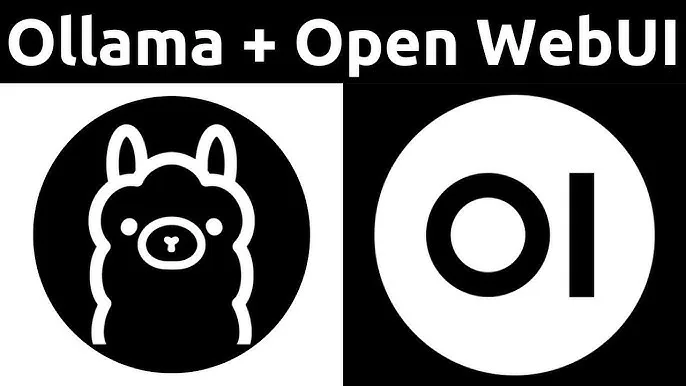Transform your Windows PC into a powerful, privacy-first AI workstation that rivals ChatGPT – all running locally on your machine
The AI revolution is here, but why should you be dependent on cloud services, subscription fees, and data privacy concerns when you can run cutting-edge large language models right on your own hardware? Today, we’re diving deep into creating your personal AI ecosystem using two game-changing tools: Ollama and Open WebUI.
Whether you’re a data scientist exploring local model deployment, a privacy-conscious developer, or simply an AI enthusiast who wants unlimited access to powerful language models, this guide will walk you through building your own ChatGPT-like experience that runs entirely offline.
Why Local AI Matters More Than Ever
Before we jump into the technical setup, let’s talk about why this matters. Running AI models locally gives you:
- Complete Privacy: Your conversations never leave your machine
- Unlimited Usage: No token limits, rate restrictions, or monthly fees
- Customization Freedom: Fine-tune models for your specific needs
- Always Available: No internet dependency for AI assistance
- Learning Opportunities: Understand how modern AI actually works under the hood
The combination of Ollama (for model management) and Open WebUI (for the interface) creates a seamless experience that feels just like using ChatGPT, but with all the benefits of local deployment.
What You’ll Need: System Requirements
Let’s be realistic about hardware requirements. While you can run smaller models on modest hardware, here’s what we recommend for the best experience:
Minimum Setup
- Windows 10/11 (64-bit)
- 16GB RAM (8GB absolute minimum)
- Modern multi-core CPU (Intel i5 10th gen or AMD Ryzen 5 3000 series)
- 50GB free storage (SSD highly recommended)
Enthusiast Setup
- 32GB+ RAM
- Recent high-end CPU
- NVIDIA RTX 3060 or better (for GPU acceleration)
- 1TB+ NVMe SSD
Part 1: Installing Ollama – Your Local Model Manager
Ollama is the secret sauce that makes running local LLMs as easy as downloading an app. Think of it as Docker for AI models – it handles all the complex backend work while giving you simple commands to manage everything.
Getting Ollama Up and Running
Step 1: Download and Install
Head to ollama.com and grab the Windows installer. The website is clean and straightforward – you can’t miss the download button. Run the installer as administrator (this is crucial for proper system integration).
The installation wizard is refreshingly simple. Accept the license, choose your installation directory (the default C:\Program Files\Ollama works perfectly), and let it do its magic.
Step 2: Verify Your Installation
Open Command Prompt and type ollama --version. If you see version information, you’re golden! If not, a quick reboot usually fixes any PATH issues.
Step 3: Download Your First Model
Here’s where the magic starts. Run ollama pull llama3.1 to download Meta’s excellent Llama 3.1 model. This 4.7GB download gives you a highly capable AI assistant that rivals many commercial offerings.
Pro tip: While it’s downloading, explore the Ollama model library to see what other models are available. From coding assistants to creative writing specialists, there’s a model for every use case.
Step 4: Test Drive Your Model
Run ollama run llama3.1 and you’ll drop into a chat interface right in your terminal. Try asking it to write some Python code or explain a complex concept – you’ll be amazed at the quality of responses from your local setup.
Part 2: Open WebUI – Your Gateway to Local AI
While Ollama’s command-line interface is powerful, Open WebUI transforms your local AI into a beautiful, web-based experience that feels like a premium AI service.
Method 1: Docker Installation (Recommended for Tech Enthusiasts)
Docker provides the cleanest, most reliable installation experience. Plus, it makes updates and management much easier down the road.
Setting Up Docker Desktop
Download Docker Desktop from docker.com and install it. After installation, restart your computer and launch Docker Desktop. Wait for the “Docker Desktop is running” notification in your system tray.
Launching Open WebUI
Copy and paste this command into Command Prompt (run as administrator):
docker run -d -p 3000:8080 --add-host=host.docker.internal:host-gateway -v open-webui:/app/backend/data --name open-webui --restart always ghcr.io/open-webui/open-webui:ollamaThis single command downloads, configures, and starts Open WebUI with all the right settings for Ollama integration.
First Login Experience
Navigate to http://localhost:3000 in your browser. You’ll be greeted with a clean registration page where you create your admin account. This is your personal AI assistant – no external sign-ups required!
Method 2: Direct Python Installation (For Python Developers)
If you prefer working directly with Python environments:
pip install open-webui
open-webui serveThen access your interface at http://localhost:8080.
Part 3: Connecting the Pieces
The beauty of this setup is that Open WebUI automatically detects your local Ollama installation. In the Open WebUI interface, you’ll see your downloaded models in the dropdown menu. Select your model, and you’re ready to start chatting!
Advanced Configuration Tips
- Navigate to Settings → Connections → Ollama to verify the connection (
http://localhost:11434) - Explore model parameters like temperature and context length for different use cases
- Set up multiple models for different tasks (coding, writing, analysis)
Power User Features to Explore
Once you have the basics running, here are some advanced features that make this setup truly powerful:
- Model Experimentation: Try different models for different tasks. Llama 3.1 for general chat, CodeLlama for programming, or Mistral for focused analysis.
- Custom System Prompts: Configure your AI assistant with specific personalities or expertise areas through system prompts.
- Document Upload: Open WebUI supports document analysis, letting you chat with your PDFs and text files.
- API Access: Use Ollama’s REST API to integrate with your own applications and scripts.
Troubleshooting Common Issues
- Ollama Command Not Recognized: Restart your computer to refresh environment variables, or manually add Ollama to your Windows PATH.
- Open WebUI Can’t Connect: Ensure Ollama is running (
ollama servein command prompt) and check that Windows Firewall isn’t blocking port 11434. - Slow Performance: Monitor your RAM usage – if you’re maxing out system memory, try smaller models or increase your virtual memory.
- Docker Issues: Enable virtualization in your BIOS settings and ensure Windows WSL2 is properly installed.
The Future is Local
What you’ve just built represents a significant shift in how we interact with AI technology. Instead of being dependent on external services, you now have a powerful, private AI assistant that grows with your needs.
This setup opens doors to experimentation that simply isn’t possible with commercial AI services. Want to fine-tune a model on your specific data? Interested in exploring different architectures? Need guaranteed uptime for critical projects? Your local AI environment makes all of this possible.
What’s Next?
Your AI journey is just beginning. Consider exploring:
- Model Fine-tuning: Customize models for your specific use cases
- Multi-model Workflows: Chain different models for complex tasks
- Integration Projects: Build applications that leverage your local AI
- Hardware Optimization: Experiment with GPU acceleration for even better performance
Join the Local AI Revolution
The democratization of AI technology means that powerful language models are no longer the exclusive domain of large tech companies. With Ollama and Open WebUI, you’ve joined a growing community of users who prioritize privacy, control, and innovation.
Ready to take your local AI setup to the next level? Start experimenting with different models, explore the extensive customization options, and most importantly – enjoy having unlimited conversations with your very own AI assistant.
Have questions about your setup or want to share your local AI experiences? The Ollama and Open WebUI communities are incredibly welcoming to newcomers and always ready to help troubleshoot or suggest optimizations.
Quick Start Summary
- Install Ollama from ollama.com
- Download a model with
ollama pull llama3.1 - Install Docker Desktop and run the Open WebUI container
- Access your AI at
http://localhost:3000 - Start chatting with your private AI assistant!
The future of AI is local, private, and powerful – and it’s running on your Windows machine right now.




